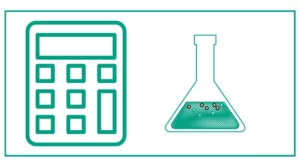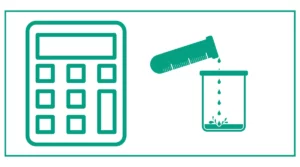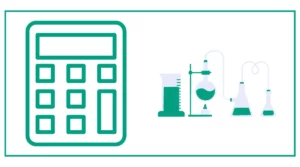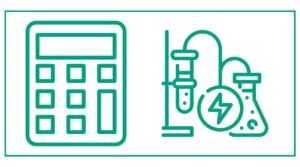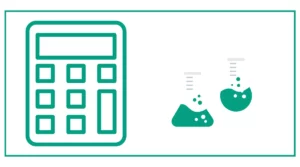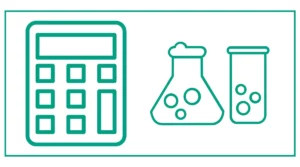Percent Yield Calculator
The percent yield calculator is a 3 in 1 tool that helps you calculate the percent yield, actual yield, and theoretical yield.
To calculate the percent yield, enter the theoretical and actual yield. The formula for finding the percent yield is: actual yield / theoretical yields x 100
To find the actual yield, enter the theoretical and percent yield. The formula for calculating the actual yield is: percent yield /100 x theoretical yield
To determine the theoretical yield, enter the actual yield and percent yield. The formula for finding the theoretical yield is: actual yield / Theoretical yield x 100
Make sure to choose the correct units.
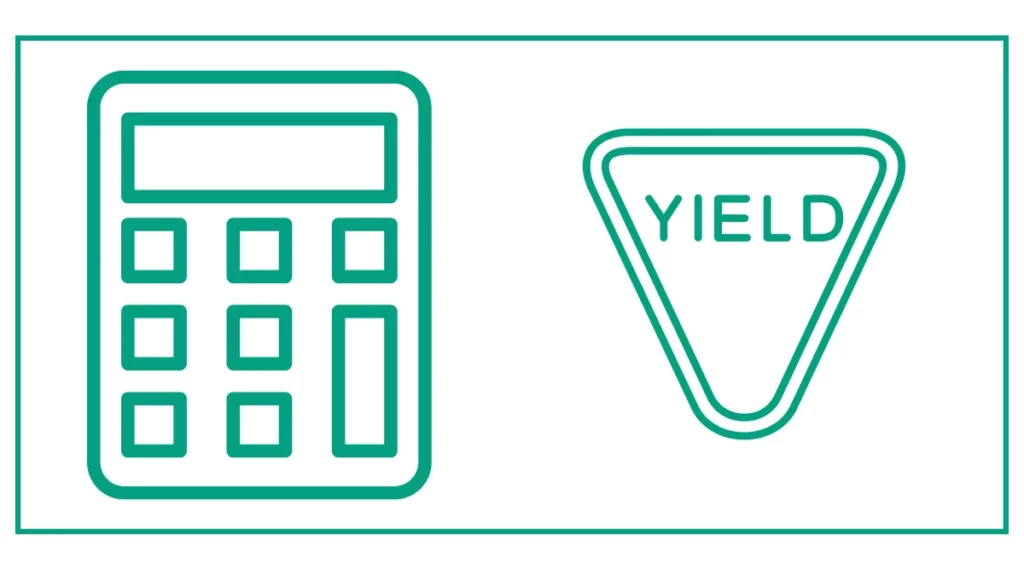
You might want to calculate the normality or use the molarity finder.
What is Yield in Chemistry?
Yield in chemistry refers to the amount of product obtained from a chemical reaction. It’s a fundamental measure that helps chemists determine how successful a reaction has been. The yield of a reaction can be expressed in various ways, but the most common are actual yield, theoretical yield, and percent yield.
Actual Yield
Actual yield is the amount of product that is actually obtained from a chemical reaction in practice. This is the yield that you measure after completing an experiment in the lab. It’s important to note that the actual yield is often less than the theoretical yield due to various factors we’ll discuss later.
Theoretical Yield
Theoretical yield is the maximum amount of product that could be produced in a chemical reaction, assuming ideal conditions and that every molecule of the limiting reactant is converted into the product. The theoretical yield is calculated using stoichiometry, which involves the balanced chemical equation and the amounts of reactants used.
To calculate the theoretical yield, you need to:
- Identify the limiting reactant
- Use the balanced equation to determine the mole ratio between the limiting reactant and the product
- Convert the moles of limiting reactant to moles of product
- Convert moles of product to mass (or other appropriate units)
Percent Yield
Percent yield, also known as percentage yield, is a measure of the efficiency of a chemical reaction. It compares the actual yield to the theoretical yield and expresses the result as a percentage. The percent yield formula is:
Percent Yield = (Actual Yield / Theoretical Yield) × 100
This calculation gives chemists a clear indication of how well a reaction has performed compared to its theoretical maximum.
How to Calculate Percent Yield
Calculating percent yield involves several steps and requires knowledge of both the actual and theoretical yields. Let’s break down the process:
- Determine the actual yield through experimentation
- Calculate the theoretical yield using stoichiometry
- Apply the percent yield formula
Example 1: Calculating Percent Yield
Let’s consider a simple example to illustrate the process:
Suppose you’re conducting a reaction to produce sodium chloride (NaCl) from sodium (Na) and chlorine (Cl₂). The balanced equation is:
2Na + Cl₂ → 2NaCl
You start with 5.00 g of sodium, which is the limiting reactant. The atomic mass of Na is 23.0 g/mol, and the molar mass of NaCl is 58.5 g/mol.
Step 1: Calculate the theoretical yield
- Moles of Na = 5.00 g / 23.0 g/mol = 0.217 mol
- Moles of NaCl produced = 0.217 mol (1:1 ratio in the balanced equation)
- Theoretical yield = 0.217 mol × 58.5 g/mol = 12.7 g NaCl
Step 2: Determine the actual yield
Let’s say after performing the experiment, you obtained 11.2 g of NaCl.
Step 3: Calculate the percent yield
Percent Yield = (Actual Yield / Theoretical Yield) × 100
= (11.2 g / 12.7 g) × 100
= 88.2%
This means the reaction was 88.2% efficient in producing sodium chloride.
Factors Affecting Yield
Understanding why actual yield often differs from theoretical yield is crucial for chemists. Several factors can influence the yield of a chemical reaction:
- Incomplete reactions: Not all reactants may be converted to products.
- Side reactions: Unwanted reactions can occur, consuming reactants or products.
- Loss of product during isolation: Some product may be lost during filtration, crystallization, or other purification steps.
- Impurities in reactants: The presence of impurities can affect the reaction efficiency.
- Reaction conditions: Factors like temperature, pressure, and concentration can impact yield.
Using a Percent Yield Calculator
To simplify the process of calculating yields, many chemists and students use a percent yield calculator. This tool can quickly compute theoretical yield, actual yield, or percent yield when given the other two values. Here’s how to use the calculator provided:
- Select the type of yield you want to calculate from the dropdown menu.
- Enter the known values in the appropriate fields.
- Choose the units for theoretical and actual yield (grams, kilograms, or pounds).
- Click the “Calculate” button to get your result.
Example 2: Using the Percent Yield Calculator
Let’s use our previous example with the percent yield calculator:
- Select “Percent yield” from the dropdown.
- Enter 12.7 in the “Theoretical yield” field and select “g” as the unit.
- Enter 11.2 in the “Actual yield” field and select “g” as the unit.
- Click “Calculate”.
The calculator should display a result of 88.2%, matching our manual calculation.
The Importance of Yield Calculations in Chemistry
Yield calculations play a vital role in various aspects of chemistry:
- Evaluating reaction efficiency: Percent yield helps chemists assess how well a reaction is performing.
- Optimizing reaction conditions: By comparing percent yields under different conditions, chemists can determine the best parameters for a reaction.
- Predicting product quantities: Theoretical yield calculations allow chemists to estimate how much product they can expect from a given amount of reactants.
- Economic considerations: In industrial settings, yield calculations are crucial for determining the cost-effectiveness of chemical processes.
- Troubleshooting: Low percent yields can indicate problems with reaction conditions or the presence of side reactions, guiding further investigation.
Interpreting Percent Yield Results
When interpreting percent yield results, keep in mind:
- A percent yield of 100% indicates that the actual yield exactly matches the theoretical yield, which is rare in practice.
- Percent yields between 70-90% are often considered good for many reactions.
- Low percent yields (below 50%) may indicate significant issues with the reaction or experimental procedure.
- Percent yields over 100% are theoretically impossible but can occur due to experimental errors or the presence of impurities in the product.
References
- Roberts, J. D., & Caserio, M. C. (1977). Basic principles of organic chemistry. WA Benjamin, Inc..
- Timberlake, K. C., Timberlake, W., & Timberlake, W. (2008). Basic chemistry. Benjamin Cummings.
- Ihde, A. J. (1984). The development of modern chemistry. Courier Corporation.
- Bertini, I., Gray, H. B., Lippard, S. J., & Valentine, J. S. (1994). Bioinorganic chemistry. University science books.
